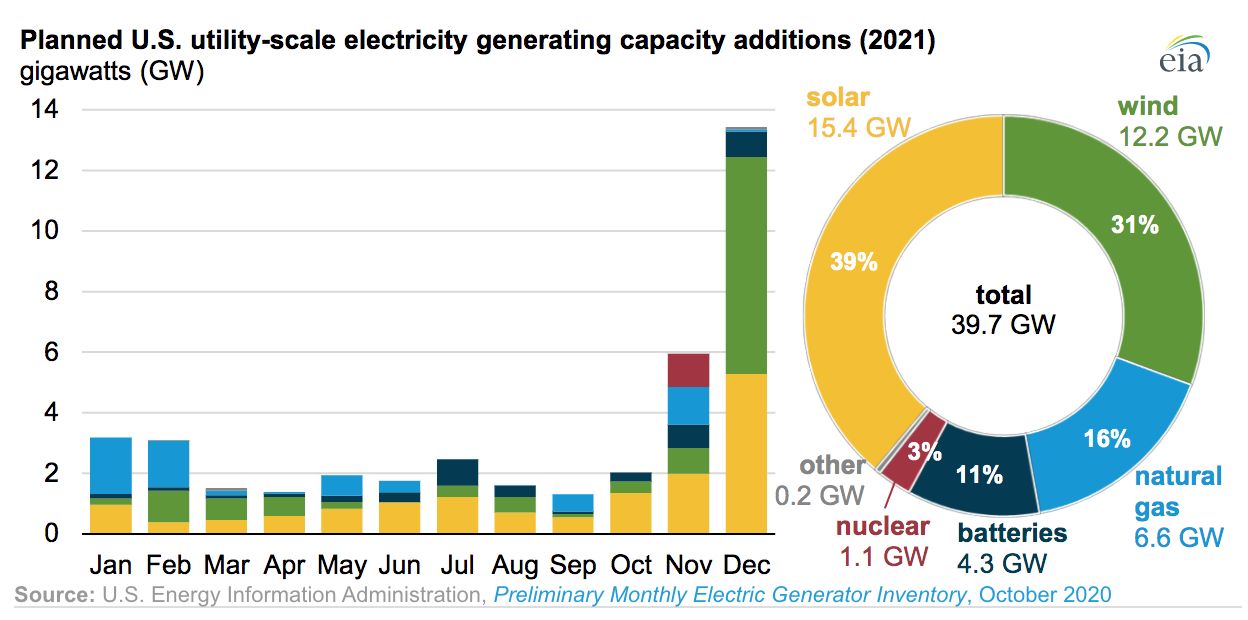Federal data reveals that natural gas will supply just 16 percent of new power plants this year as cheap wind and solar power take over the market.
Wind and solar make up a small share of U.S. electricity production today, but they’re poised to supply 70 percent of new power plant capacity built this year.
That’s not according to pro-solar activists or industry trade groups. It’s the calculation of the federal government.
Solar will deliver the most new capacity, with 39 percent, according to the latest tally by the U.S. Energy Information Administration. Wind follows close behind with 31 percent. The long-awaited Vogtle nuclear plant in Georgia could finally wrap up one of its reactors this year, contributing another 3 percent. And battery storage will grow to 11 percent of new capacity, with a carbon impact determined by the cleanliness of the electricity that charges them.
Natural gas, the dominant fuel source for U.S. electricity, is only expected to account for 16 percent of new power plant capacity. Almost all of those gas generators are popping up in Texas, Ohio or Pennsylvania, the EIA noted.

Large-scale solar plants take the lead as the largest source of new power plant capacity this year, according to a government analysis. (Graphic credit: EIA)
In the past, when wind and solar were more expensive, opponents of clean energy investment framed it as a threat to the economy. President Donald Trump made that case when he pulled out of the Paris climate agreement, which he alleged would impose “draconian financial and economic burdens.”
But clean energy looks less threatening to industry when power companies themselves overwhelmingly choose it to meet their needs. In recent years, nearly all major publicly traded utility companies have pledged to zero out their carbon emissions by mid-century. That’s not as aggressive a timeline as president-elect Joe Biden’s proposed deadline of 2035 for a zero-carbon power system, but it’s aligned on the desired end state.
The 2021 outlook isn’t all good for carbon-free power sources, however.
Nuclear plants, which produce emissions-free power all day and night, will lead the chart for power plants shutting down this year. New York’s Indian Point Unit 3 will close, reducing capacity for the crucial New York City region. The Exelon Corporation is shutting down its Byron and Dresden plants in Illinois. Those three plants add up to 5.1 gigawatts, roughly 5 percent of the nation’s nuclear fleet.
Some 56 percent of the retiring power capacity this year will be nuclear, while coal plants account for 30 percent.
https://www.greentechmedia.com/articles/read/almost-all-new-us-power-plants-in-2021-will-be-carbon-free

